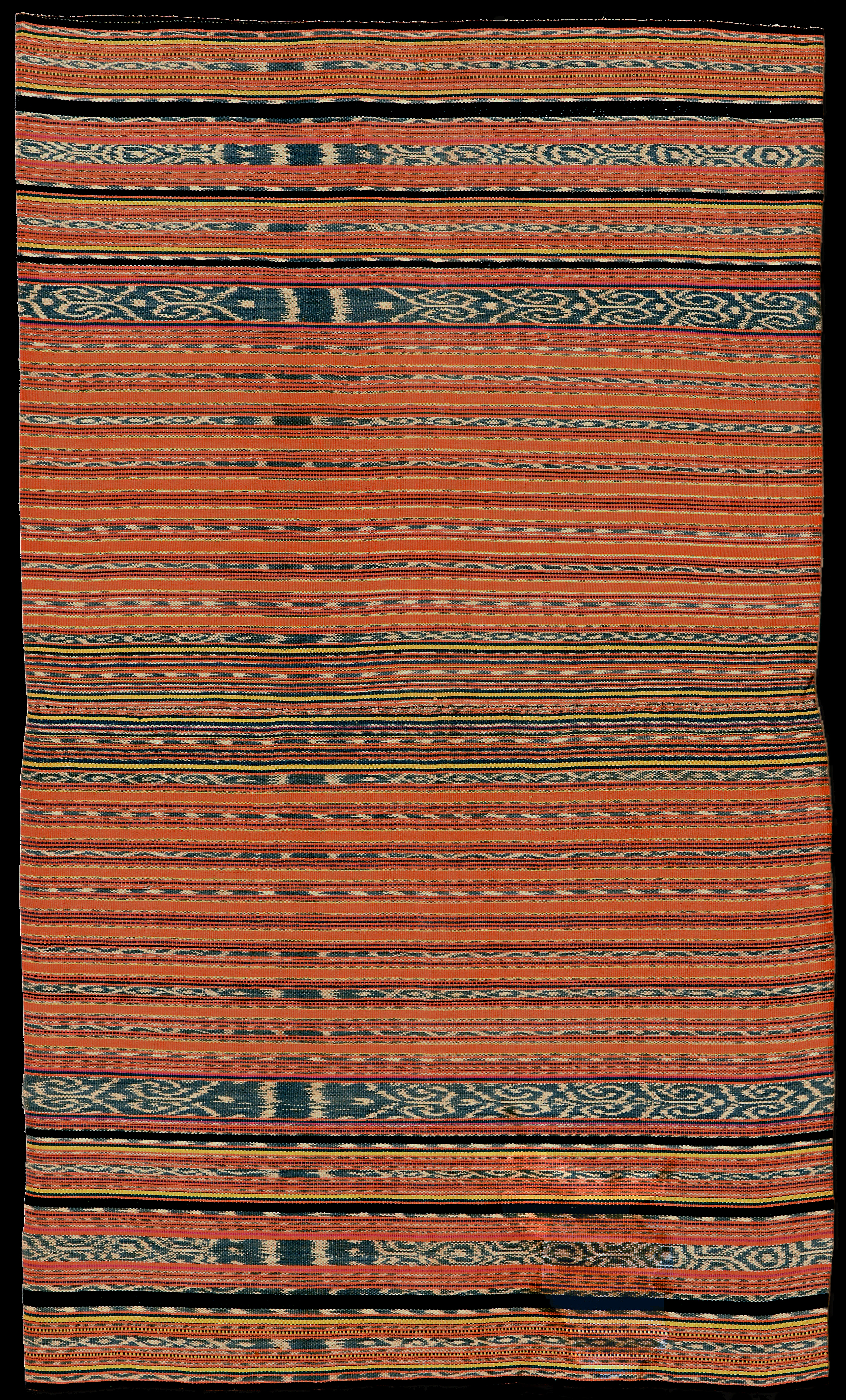| |
 mouse over to magnify mouse over to magnify
| | | | 278 Moluccas, Sermata
Sarong
| | Locale: | Sermata (the most likely of three possible origins, the others being Babar and Luang) | | Period: | Late colonial | | Panels: | 2 | | Design: | Design in a hybrid style used on Sermata, Luang and Babar that consist of numerous wider and narrower ikated bands and stripes, two of them slightly wider than the others. Overall appearance very similar to Sermata sarong photographed in the field by De Jonge, see below. The motif in the largest ikated band, with its rounded, curling shapes has a Babar 'feel', but is also very similar to the motif on an 19th c. Tanimbar adat sarong (see Literature). The colour palette would be unusual for Babar but not unique. | | Size: | 78 x 132 cm (30.7 x 51.9 in) | | Weight: | 690 g (335 g/m2) | | Yarn: | Cotton, hand-spun, fine, quad-ply, loosely twined - plus accent stripes in commercial cotton | | Comment: | Cloth for sarong, warp uncut. An eloquent example of the region's interculturality - which on most islands coexists with individuality at the clan and family level and the protection of proprietary motifs. Toos van Dijk: 'The overall design with its many narrow ikated bands and a few wider bands towards the extremities, strongly reminds me of the sarongs of Babar, particularly those of Marsela island where I did research. The ikat motifs on the narrower bands are common on the sarongs of the Babar islands. The ikat motif in the wider band is familiar to me from other variations, but not in exactly this form.' According to Riedel a large part of the Sermatan population is originally from Babar - nut unlikely given the proximity. Unusual ochre weft. Ex collection J.B. Lüth. | | Background: | Additional information in chapters on Moluccas and Sermata. | | Published: | Ikat Textiles of the Indonesian Archipelago, 2018.
| | Compare: | 279 280 | | Sources: | Overall appearance, field division, colour palette and the use yellow lines are all strikingly similar to sarong made in Romkisar village on Sermata, photographed by Nico de Jonge in 1981, ref. N12-18A. Fairly similar to Babar sarong collected by Baron van Hoëvell in 1893 in Kuhnt-Saptodewo, Maluku, Fig. 107, but with less definition. Linked hexagons in second widest ikated band very similar to those on Babar sarong in Khan Majlis, Indonesische Textilien, Wege zu Goettern und Ahnen, Fig. 556. Meander in ikated bands hugging the seam the same as on Babar sarong in Fig. 557. The main motif, with its inward curling, is similar to that on 18th c. Tanimbar sarong in Honolulu Academy of Arts, catalog number unknown, and to one on Tanimbar pinatikan in Van Vuuren, Ikat from Tanimbar, Photo 15a, b, p. 29. Below, photo Nico de Jonge.
 | | |
 ©Peter ten Hoopen, 2024
All rights reserved.
|
|


